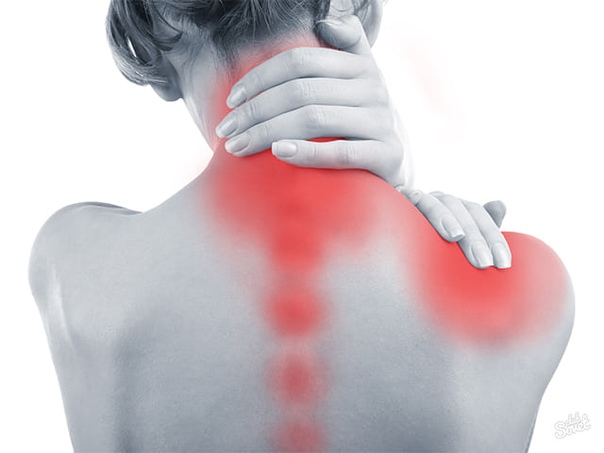In recent years, the landscape of pain management has undergone a profound transformation. Historically, pain relief was largely synonymous with pharmaceutical interventions—painkillers and anti-inflammatory medications that, while effective to some extent, often came with a host of side effects and dependency issues. However, as our understanding of pain and healing evolves, so too does our approach to managing and alleviating it. This article explores the transformative approaches to pain relief that are reshaping the way we think about and experience healing.
The Evolving Understanding of Pain
Pain is a complex and multifaceted experience, far more intricate than the simple notion of a signal from the body to the brain. Modern pain research reveals that pain is not just a physical sensation but also a psychological and emotional experience. The biopsychosocial model of pain emphasizes the interplay between biological, psychological, and social factors in pain perception. This model has paved the way for a more holistic approach to pain management, one that goes beyond mere symptom relief.
The Rise of Non-Pharmacological Approaches
In response to the limitations and risks associated with traditional medications, there has been a significant shift towards non-pharmacological pain relief methods. These approaches focus on addressing the root causes of pain and improving overall well-being rather than merely masking symptoms. Some of the most promising methods include:
1. Physical Therapy and Exercise
Physical therapy has long been recognized as a cornerstone of pain management, particularly for musculoskeletal conditions. Modern physical therapy goes beyond traditional exercises to incorporate techniques such as manual therapy, neuromuscular re-education, and functional movement training. Tailored exercise programs not only strengthen muscles and improve flexibility but also promote the release of endorphins, the body’s natural painkillers.
2. Mind-Body Techniques
Mind-body practices, including meditation, yoga, and mindfulness, have gained traction for their ability to help individuals manage pain by addressing the mental and emotional components. Mindfulness-Based Stress Reduction (MBSR) and Cognitive Behavioral Therapy (CBT) are two examples of evidence-based techniques that can reduce the perception of pain and improve quality of life. These methods teach individuals to focus on the present moment, reduce stress, and develop coping strategies.
3. Acupuncture and Traditional Chinese Medicine
Acupuncture, a practice rooted in Traditional Chinese Medicine (TCM), involves inserting fine needles into specific points on the body to balance the flow of Qi (energy). Research suggests that acupuncture can stimulate the release of endorphins and other neurochemicals that help reduce pain. Additionally, TCM incorporates herbal remedies and dietary adjustments that can complement acupuncture and enhance overall health.
4. Biofeedback and Neurofeedback
Biofeedback and neurofeedback are techniques that enable individuals to gain greater control over physiological functions. Biofeedback involves using sensors to provide real-time data on bodily functions such as heart rate and muscle tension, allowing individuals to learn how to regulate these functions consciously. Neurofeedback focuses on training brainwave activity to improve cognitive and emotional regulation. Both methods have shown promise in managing chronic pain by helping individuals develop greater self-awareness and control.
Innovative Technologies in Pain Management
Advancements in technology are also playing a pivotal role in transforming pain relief. Cutting-edge innovations offer new ways to manage pain with increased precision and efficacy.
1. Transcranial Magnetic Stimulation (TMS)
TMS is a non-invasive technique that uses magnetic fields to stimulate nerve cells in the brain. It has shown effectiveness in treating chronic pain conditions and is particularly useful for patients who have not responded well to other treatments. By modulating brain activity, TMS can help reduce pain perception and improve functional outcomes.
2. Virtual Reality (VR) Therapy
Virtual reality therapy has emerged as an exciting tool for pain management. By immersing patients in virtual environments, VR therapy can distract from pain and reduce anxiety. Studies have demonstrated that VR can be effective in managing acute pain during medical procedures and in chronic pain conditions by providing a novel and engaging form of distraction.
3. Wearable Technology
Wearable devices, such as smartwatches and fitness trackers, are being developed to monitor pain levels and provide real-time feedback. Some advanced wearables use electrical stimulation or heat therapy to target specific areas of pain. These devices offer a personalized approach to pain management, allowing users to track their progress and make adjustments based on their individual needs.
The Role of Lifestyle and Nutrition
An often-overlooked aspect of pain management is the impact of lifestyle and nutrition. A healthy lifestyle can significantly affect pain levels and overall well-being.
1. Dietary Considerations
Certain dietary choices can either exacerbate or alleviate pain. Anti-inflammatory diets, rich in fruits, vegetables, whole grains, and healthy fats, can help reduce inflammation and improve pain outcomes. Omega-3 fatty acids, found in fish oil and flaxseeds, are particularly beneficial for their anti-inflammatory properties.
2. Stress Management
Chronic stress is known to worsen pain conditions by increasing muscle tension and altering pain perception. Integrating stress management techniques such as deep breathing, progressive muscle relaxation, and engaging in hobbies can help mitigate the impact of stress on pain levels.
A Multidisciplinary Approach
The most effective pain management often involves a multidisciplinary approach that combines various strategies tailored to individual needs. Collaboration between healthcare providers, including pain specialists, physical therapists, psychologists, and nutritionists, can create a comprehensive pain management plan. This integrative approach not only addresses the physical aspects of pain but also considers psychological and social factors, leading to more effective and sustainable outcomes.
Conclusion
The transformative shift in pain relief is redefining how we approach healing and well-being. By embracing non-pharmacological methods, leveraging innovative technologies, and focusing on lifestyle and nutritional factors, we are moving towards a more holistic and effective paradigm of pain management. This evolution not only enhances our ability to manage pain but also empowers individuals to take an active role in their own healing journeys. As research and technology continue to advance, the future of pain relief holds the promise of even more personalized and effective solutions, ultimately leading to a better quality of life for those affected by pain.



